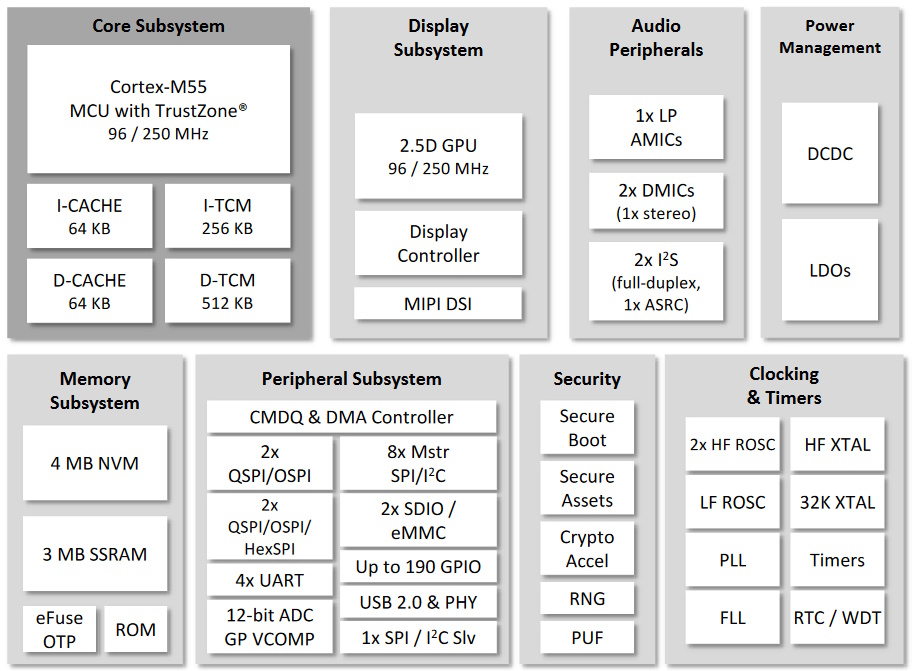I hail from the days of 5V transistor-transistor level (TTL) logic, like the SN7400-series of integrated circuits (ICs) from Texas Instruments (TI) that leapt onto the centerstage circa the mid-1960s with a hullabaloo of heckelphones, which isn’t something you can hope to hear very often (thank goodness).
As an aside, I’d like to give a shout-out to the guys and gals at TI who created the yellow TTL Data Book for Design Engineers. This contained a treasure trove of knowledge back in the mists of time we used to call the 1970s, 1980s, and 1990s, and it still provides a wealth of reference material to this day. Seriously, I have a copy on the coffee table next to my comfy chair at home—that’s how useful it is (you can download a copy of the Second Edition from 1976 here).
The reason I make mention of this here is that I was just chatting with Scott Hanson, who is the founder and CTO of Ambiq. I remember when I was first introduced to Ambiq shortly after its founding in 2010. This was when they introduced their original Apollo microcontroller unit (MCU), which was based on an Arm Cortex-M4F running at 24MHz. The big news was that the Apollo was the first MCU ever to be implemented using Ambiq’s proprietary Subthreshold Power Optimized Technology (SPOT).
At that time, I was vaguely aware of subthreshold circuits whose transistors are operated at voltage levels below their thresholds. Not surprisingly, such circuits are sensitive to noise and to process, voltage, and temperature (PVT) variations. As a result, to the best of my knowledge, prior to Ambiq, these techniques had only ever been used to create relatively simple circuits in things like non-smart watches.
To put this in perspective, in the case of the 5V TTL with which I was familiar, an input signal was defined as “low” if it was between 0V (GND) and 0.8V, while a “high” was anything between 2V and 5V (Vcc). So, the fact that the Apollo’s core voltage was below 0.8V set my poor old brain wobbling wantonly on its gimbals.
Since power consumption is a function of V2, using subthreshold implementations makes Ambiq’s processors mindbogglingly power efficient. As the folks at Ambiq like to joke, their SPOT platform gives them an unfair low power advantage.
Scott and I commenced our chat by conversing about how the press these days is largely focusing on generative artificial intelligence (GenAI), like the ChatGPT’s of the world. Scott says that, to him, the bigger story is when we take this same AI and start running it in endpoint devices on the edge where the internet rubber meets the real-world road.
One of the things most people don’t realize is that what Scott calls “small AI” is popping up all around us. For example, designers are increasingly using AI to replace things like filters and other functions that would previously have been implemented using traditional digital signal processing (DSP) techniques. We see small AI in things like our smartphones whose auto-focus (following an update) is suddenly amazing. Have you noticed how you can do things like search your albums for images containing dogs, or remove unwanted artifacts (or people) from your photos? These are not huge features. It’s little stuff. But it’s also little stuff that makes our lives just a little bit easier. And it’s little stuff that’s all around us.
As Scott told me: “It’s your wearables that suddenly start to act like on-wrist doctors or trainers. It’s your factory equipment that suddenly becomes smart, monitoring its vibrations and sounds and all that stuff. These devices are all either already running neural networks or they are going to run neural networks. We’re talking about billions upon billions of devices. This will dwarf what’s happening in the cloud.” Scott was on a roll, and he said a whole lot more, but I couldn’t write it all down fast enough.
The real problem, of course, is that endpoint devices are resource-constrained as compared to their cloud-based cousins. We’re talking about devices with 2,000X less available memory, a 3,000X lower price target, and a 100,000X smaller power budget. In a crunchy nutshell, endpoint AI requires a complete high-performance solution that consumes the lowest possible power.
All of which leads us to Ambiq’s announcement of its latest and greatest offering—the Apollo5 MCU. Based on the Arm Cortex-M55, this is by far the most performant, lowest-power product Ambiq has ever built. The amazing thing is that, due to significant architectural enhancements and modifications, the Apollo5 with its Cortex-M55 running at up to 250MHz consumes less power than its predecessors in the form of the Cortex-M4F-based Apollo3 and Apollo4.

Apollo510 block diagram (Source: Ambiq)
I’m not going to go through all the speeds and feeds here. I think it’s sufficient to simply highlight the following nuggets of knowledge and tidbits of trivia:
- Based on Arm Cortex-M55, the Apollo510 delivers 30x better power efficiency and 10x faster performance compared to previous generations.
- The Apollo510 provides the ability to do AI/ML workloads concurrently with complex graphics, telco-quality voice applications, and always-on voice/sensor processing.
- The Apollo510 boasts 4MB on-chip NVM, 3.75MB on-chip SRAM, and high bandwidth interfaces to off-chip memories.
- The Apollo510 flaunts a 2.5D GPU with vector graphics acceleration for vibrant, crystal-clear, and smooth graphics, offering a 3.5X overall performance enhancement over the Apollo4 Plus family.
- The Apollo510 offers support for Memory in Pixel (MiP) displays that are typically found in only the lowest-power products.
- The Apollo510 provides robust security with Ambiq’s secureSPOT platform with Arm TrustZone technology.
One thing Scott said that really caught my attention was when he noted that, unlike the old days, Ambiq is no longer just a hardware company—it’s evolved to become a solutions and software company. For example, Ambiq’s neuralSPOT is an open-source developer-focused AI development kit (ADK) and toolkit designed for use with Ambiq’s hardware platforms. Ideal for AI developers, neuralSPOT includes Ambiq-optimized libraries, tools, and examples to help jumpstart AI-focused applications.
Ambiq also offers Voice-on-SPOT (VoS), which is a complete, always-on, always-listening, voice-to-cloud solution for local voice commands and/or voice assistant integration in battery-powered IoT endpoint devices.
But wait, there’s more, because Ambiq also provides HeartKit, SleepKit, and PhysioKit. These are pre-trained neural networks that are available on GitHub. Since I’m a hardware design engineer, I think of these as being like reference designs. They’re not intended for you to take them to market, but all the training data is there, thereby allowing you to use these as seeds to get you kick-started on your own neural network development.

I don’t know what the little Ambiq character is called. What I do know is that the image above gives me a warm and fuzzy feeling. I’m very excited by the ways in which small AI is permeating our lives, and I’m very, very excited to see where all this takes us in the future. What about you? Do you have any thoughts you’d care to share on any of this?





